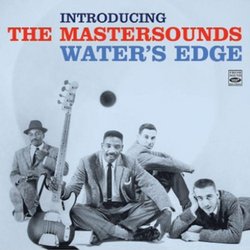Get it while you can
THX1138b | NY USA | 09/21/2008
(4 out of 5 stars)
"I can't believe some one has finally reissued The Mastersounds debut 1957 recording Water's Edge after decades of obscurity. Kudos to Fresh Sound!
The Mastersounds are fronted by Montgomery brothers Buddy (vibes) and Monk (electric bass). As the cover photo makes clear, Monk and his bass are in the fore front. (And that is a real speaker in the background, though it is not used in the recording)
The lineup, then as now, draws comparison to the Modern Jazz Quartet. Fair as far as it goes - classic jazz quartet with piano and vibes. But The Mastersounds have more swing, a more open feel. They're just less "serious".
The songs here are mostly standards with one or two by the group and brother Wes's Tune. The musicians are good and they are playing good jazz. I have not heard their later recordings, though I do have Groove Yard and by comparison, as good as this recording is, you know that the guys are still new and can do better.
The recording quality is very much of its time. You're not going to get the dramatic clarity and dynamics of digital and, frankly, not the best of analog either. But it does have a nice sense of space and "air" around the musicians.
About that bass. Monk was one of the very first jazz musicians to adopt Leo Fender's strange new instrument. Water's Edge in 1957, was one of the first jazz recordings to feature an electric bass. It is an early design, it has changed much since then, as has the ability to capture it clearly on record. The bass is noticeable but it does not stand out in the mix by todays standards. As, in fact, most upright basses did not stand out much in the recordings of the time. Also, Buddy played with his thumb, making the sound even softer. But it is clearly not an upright, it's a unique sound and Monk does it justice. That early single-coil electric makes a very nice sound when paired up with the vibes.
Though I could wish for a better recording it is by no means a poor recording. Monk started on upright but had been playing electric for about 5 yrs. His solos and comping are top notch and he gets quite a bit of space to show off.
I doubt this CD will be available very long (it was issued in May of 2008). It's important as a historical document of the electric bass, as well as a fine tribute to Monk Montgomery.
Nice packaging, with pictures and original liner notes by Ralph Gleason.
"

